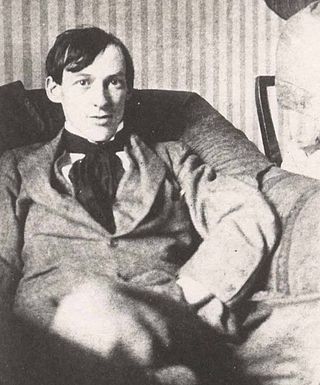
Bernard Howell Leach was a British studio potter and art teacher. He is regarded as the "Father of British studio pottery".

Shōji Hamada was a Japanese potter. He had a significant influence on studio pottery of the twentieth century, and a major figure of the mingei (folk-art) movement, establishing the town of Mashiko as a world-renowned pottery centre. In 1955 he was designated a "Living National Treasure".

Studio pottery is pottery made by professional and amateur artists or artisans working alone or in small groups, making unique items or short runs. Typically, all stages of manufacture are carried out by the artists themselves. Studio pottery includes functional wares such as tableware and cookware, and non-functional wares such as sculpture, with vases and bowls covering the middle ground, often being used only for display. Studio potters can be referred to as ceramic artists, ceramists, ceramicists or as an artist who uses clay as a medium.

Geoffrey Eastop was an English potter.

Dame Lucie Rie, was an Austrian-born, independent, British studio potter working in a time when most ceramicists were male. She is known for her extensive technical knowledge, her meticulously detailed experimentation with glazes and with firing and her unusual decorative techniques.

Seth Cardew was an English studio potter. He was the eldest son of fellow potter Michael Cardew and the brother of the composer Cornelius Cardew.

Julian Francis Stair is an English potter, academic and writer. He makes groups of work using a variety of materials, from fine glazed porcelain to coarse engineering brick clays. His work ranges in scale from hand-sized cups and teapots to monumental jars at over 6 feet tall and weighing half a ton.

James Dickson Innes was a Welsh painter, mainly of mountain landscapes but occasionally of figure subjects. He worked in both oils and watercolours.
John Maltby was a distinguished English sculptor and studio potter.

Elizabeth Fritsch CBE is a British studio potter and ceramic artist born into a Welsh family in Whitchurch on the Shropshire border. Her innovative hand built and painted pots are often influenced by ideas from music, painting, literature, landscape and architecture.
Clive Bowen is a Devon based potter whose work is included in a number of public collections.
Walter Gibson Dexter was a Canadian ceramist, potter and teacher.

William Alfred Ismay was a librarian, writer and collector in Wakefield, West Yorkshire known for his significant collection of post-war studio pottery. The collection called the W.A. Ismay Collection was bequeathed to the Yorkshire Museum and is one of the world's largest collections of 20th-century studio pottery. It includes work by Bernard Leach, Hans Coper, Shoji Hamada, Takeshi Yasuda, David Leach Dan Arbeid and Lucie Rie.
Joyce Scott FRSASA 'is an Australian artist working in drawing, oil painting and ceramics.' 'She has held ten independent exhibitions, is represented internationally and has received five awards.' 'Scott, née Mottershead, was born in Poynton, Cheshire, England in 1938 and migrated with her family to Adelaide, South Australia in 1951.'

Philip Rogers was a Welsh studio potter who has been featured in a number of books on studio pottery and worked at Lower Cefnfaes Farm's Marston Pottery from 1984 until his death in December 2020 and previously in Rhayader, Powys, Wales, from 1978 to 1984.

Jane Hamlyn is an English studio potter known for her functional salt glaze pottery.

Gladys Reynell (1881–1956) was one of South Australia's earliest potters and is known for her bold modernist style and her preference for working with native clays.
Garth Clark is an art critic, art historian, curator, gallerist, and art dealer from Pretoria, South Africa.

John Leach was a studio potter, the eldest son of David Leach and the eldest grandson of Bernard Leach. Born in St Ives in 1939, he studied under his grandfather and father at St Ives and under Ray Finch at Winchcombe. Leach left school in 1957 and worked with his father at Lowerdown Pottery Bovey Tracey, Devon and from 1961 to 1962 he was an apprentice at the Leach Pottery St Ives.
John Reeve was a Canadian studio potter.















